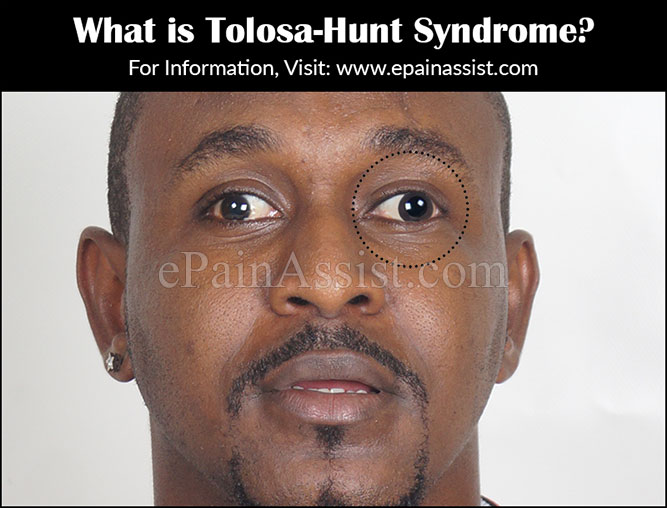What is Tolosa-Hunt Syndrome?
Tolosa-Hunt Syndrome is a rare pathological condition in which the affected individual experiences severe periorbital headaches along with ophthalmoplegia usually in one eye. The pain experienced with Tolosa-Hunt Syndrome is extremely severe and sharp and the eye movements are decreased. These symptoms in majority of the cases resolve on their own without any intervention but then again recur. There is no select pattern to the onset of these symptoms. Individuals with Tolosa-Hunt Syndrome may also have ptosis of the eye, diplopia, enlarged pupil, and numbness in the facial region. There is no known cause for Tolosa-Hunt Syndrome but is believed to be caused due to inflammation in specific regions behind the eyes which are the cavernous sinus and superior orbital fissure.

What Causes Tolosa-Hunt Syndrome?
As stated above, the exact cause of Tolosa-Hunt Syndrome is not known but the most preferred theory is that this condition is caused due to the immune response of the body triggering an inflammation in the cavernous sinus region and superior orbital fissure of the body. Thus it is believed that Tolosa-Hunt Syndrome is an autoimmune disorder. An autoimmune disorder is a condition in which the immune system of the body mistakenly attacks the healthy cells of the body damaging them by producing antibodies against them.
What are the Symptoms of Tolosa-Hunt Syndrome?
The classic presenting feature of Tolosa-Hunt Syndrome is a sudden onset of severe periorbital headache which is then followed by painful and decreased movements of the eyes. In severe cases of Tolosa-Hunt Syndrome, the eye is completely unable to move in any direction. Some of the other symptoms of Tolosa-Hunt Syndrome are:
- Diplopia
- Paralysis of certain cranial nerves
- Chronic fatigue
- Proptosis
- Ptosis of the eye
- Decreased vision
How is Tolosa-Hunt Syndrome Diagnosed?
In order to diagnose Tolosa-Hunt Syndrome, there are a few criteria that need to be met. These criteria are that the individual should have had sudden onset of severe periorbital headaches with decreased eye movements at least for a period of eight weeks which come and go without any treatment with associated damage to the III, IV, and VI cranial nerves, and relief of symptoms within a couple of days of administration of steroids. If these conditions are met then an individual can be diagnosed with Tolosa-Hunt Syndrome.
Additionally, a detailed history of the patient will be taken as to when the symptoms started. The physician may also order advanced imaging in the form of CT and MRI scan which will clearly reveal inflammation of areas behind the eye namely the cavernous sinus and the superior orbital fissure thus confirming the diagnosis of Tolosa-Hunt Syndrome.
How is Tolosa-Hunt Syndrome Treated?
In majority of the cases, the symptoms caused by Tolosa-Hunt Syndrome resolve in a couple of days with use of steroids. For cases in which this condition has been left untreated for a prolonged period of time then it takes about a couple of weeks for the symptoms to resolve or get better but despite treatment there is always a chance for the symptoms to recur of Tolosa-Hunt Syndrome.
What is the Prognosis of Tolosa-Hunt Syndrome?
The prognosis of Tolosa-Hunt Syndrome generally is quite good. Some individuals have spontaneous remission of the symptoms while some respond with immediate relief of symptoms to short term use of steroids. The damage done to the ocular muscles due to this condition may persist and in some cases is permanent. Around 40% of people tend to have a relapse of the symptoms if they have a known diagnosis of Tolosa-Hunt Syndrome.
- Mayo Clinic Proceedings. “Tolosa-Hunt Syndrome: Imaging Features in 15 Patients.” https://www.mayoclinicproceedings.org/article/S0025-6196(11)64805-2/fulltext
- International Journal of Ophthalmology. “Tolosa-Hunt Syndrome: A Rare Case Report and Review of the Literature.” https://www.ncbi.nlm.nih.gov/pmc/articles/PMC3788612/
